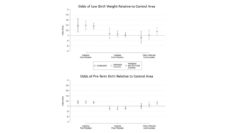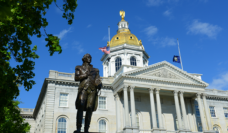Environmental health scientists investigate the interplay between environmental exposures, human biology, genetics, and common diseases to help prevent disease and improve human health. In recent years, strategies to reduce environmental health threats have combined scientific research with community engagement. Environmental health literacy has been proposed as a novel framework for community engagement that captures community members’ knowledge of environmental impacts and the skills needed to take health-protective actions.
We recently investigated connections between environmental health literacy and willingness to engage in protective behaviors, especially among people who are more susceptible to environmental health threats. We defined environmental health literacy as three interconnected elements: knowing the facts (true/false questions about health threats), feeling ready to decide what to do (based on the information one feels they have), and believing that protective behaviors work (to prevent negative outcomes).
In June 2020, we collected survey data from North Carolina residents on two health threats: COVID-19 and industrial contaminants called per- and polyfluoroalkyl substances (PFAS). Both health threats have had particularly severe impacts on two kinds of communities: those with lower levels of income and education, and those that have been historically marginalized based on racial and ethnic identities.
Each health threat is unique. COVID-19, as we well know, is an infectious disease that is spread person to person through respiratory droplets. PFAS, which are less familiar to most people, can also be referred to as “forever chemicals” that accumulate in nature and in the human body with no easy way of getting rid of them.
When designing our study, we expected that individuals with fewer social and economic resources would have lower levels of environmental health literacy and that they would be less willing to engage in protective behaviors. To our surprise, we did not see this relationship. For both COVID-19 and PFAS, social and economic factors did not impede literacy or being willing to act. In fact, the relationship was quite strong.
We also expected that individuals from marginalized racial and ethnic communities—in particular, Black and Hispanic residents of North Carolina—would be at a disadvantage compared to other groups when it came to environmental health literacy. To our surprise, we found the opposite. Black participants expressed more willingness than White participants to engage in protective behaviors. This disparity in willingness was linked to Black participants’ higher levels of “believing it works” (for protective behaviors against PFAS) and “feeling ready to decide” (to engage in protective behaviors against both PFAS and COVID-19).
Intriguingly, Black participants’ willingness to protect themselves from COVID-19 appeared in spite of lower scores on “knowing the facts” about COVID-19 (there were no apparent differences in “knowing the facts” for PFAS). Such a result provides another example of research supporting the idea that objectively defined knowledge is not the only key to get people interested in protecting themselves.
The findings from our study suggest a few ways that environmental health literacy can help people confront health threats. First, designing engagement efforts around our three distinct elements of literacy would be fruitful, as they are closely related to willingness to engage in protective behaviors. Importantly, we incorporated not only “knowing the facts,” which remains one important element of literacy, but also “feeling ready” and “believing it works” as two other key dimensions.
Second, as we observed in the case of COVID-19, Black participants were quite willing to engage in protective behaviors despite lower levels of factual knowledge. Why would this be? It was due primarily to their feeling that they had sufficient information to make good decisions about their health. This feeling of readiness need not correspond to knowing facts as they are traditionally defined (for example, true/false questions about biological mechanisms), perhaps due to other ways of knowing about health threats, such as direct knowledge of the impact of COVID-19 on immediate and extended family members, friends, and other members of one’s social circle.
Overall, our results go against the received wisdom that rich White communities are always the ones more willing to take action against impending health threats. Understanding how people of all backgrounds make decisions about health threats will go a long way toward helping everyone live healthier and happier lives.
Photo via Getty Images















